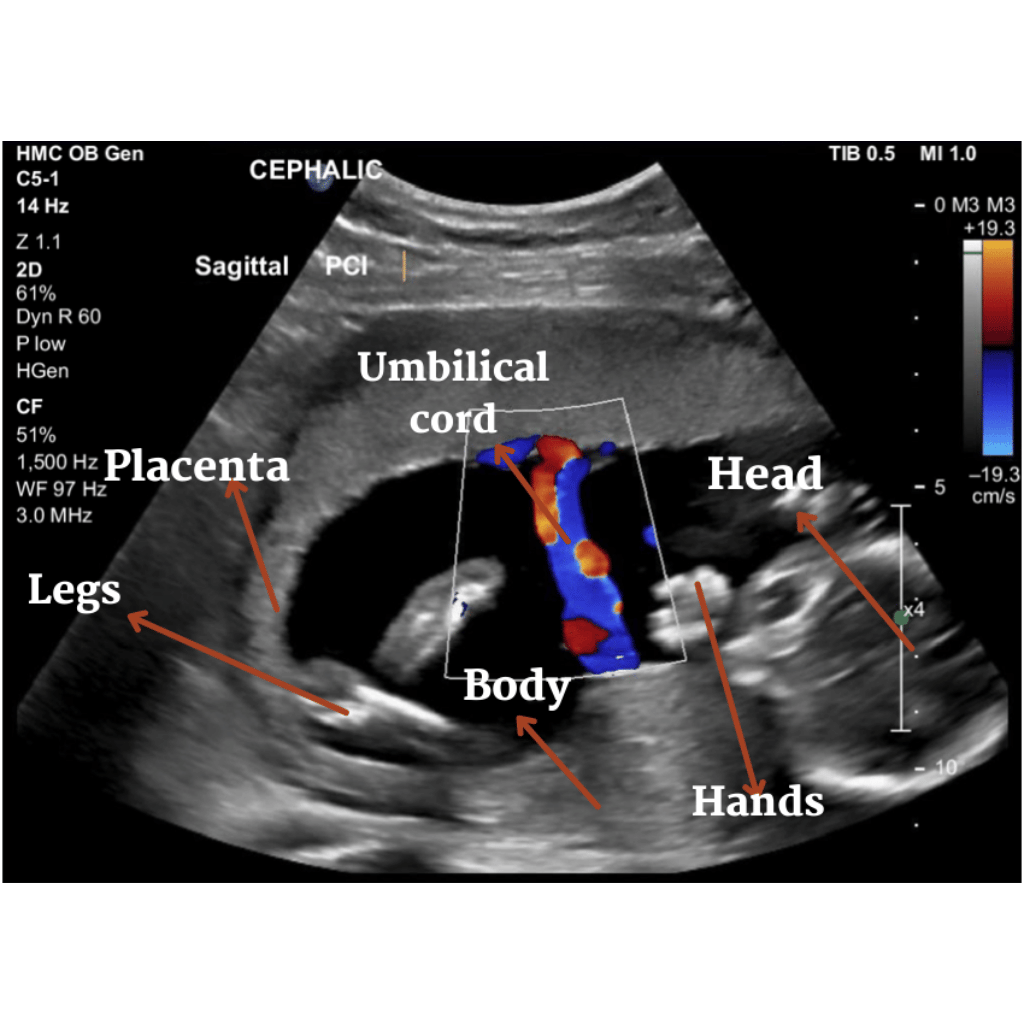What is an Obstetric Color Doppler Study?
An Obstetric Color Doppler Study is a specialized ultrasound test that evaluates blood flow in the placenta, umbilical cord, and fetal blood vessels. This test provides real-time imaging of blood circulation and helps in assessing whether the baby is receiving adequate oxygen and nutrients for healthy growth.
This test is especially useful in high-risk pregnancies to monitor fetal well-being and detect any potential complications.

Why is an Obstetric Color Doppler Study Important?
- Checks Blood Flow in the Placenta & Umbilical Cord: Ensures the baby is receiving enough oxygen and nutrients.
- Assesses Fetal Circulation: Helps detect any issues with blood supply that might affect the baby’s development.
- Detects Pregnancy Complications Early: Essential for high-risk pregnancies, such as those with gestational diabetes, hypertension, fetal growth restrictions (IUGR), or Rh incompatibility.
- Monitors High-Risk Pregnancies: Helps doctors make informed decisions regarding delivery timing and interventions.
- Evaluates Uterine & Fetal Health: Can indicate potential risks of pre-eclampsia or placental insufficiency.
How is the Obstetric Color Doppler Study Performed?
The procedure is non-invasive, painless, and similar to a routine pregnancy ultrasound, with additional color-coded imaging to assess blood flow.
Steps Involved:
- Preparation: No special preparation is needed. You may be asked to drink water for better visualization.
- Application of Gel: A water-based gel is applied to the abdomen to allow smooth movement of the probe.
- Ultrasound Examination: A handheld transducer is moved over the belly to capture images of the baby’s blood vessels, umbilical cord, and placenta.
- Color Doppler Imaging: The machine color-codes the blood flow – red for blood flowing toward the probe and blue for blood flowing away, helping doctors assess circulation patterns.
- Analysis & Reporting: The doctor evaluates the findings and determines if the blood flow is normal or if there are any complications requiring further monitoring or treatment.
FREQUENTLY ASKED QUESTIONS
Q.1. When is an Obstetric Color Doppler Study recommended?
Doctors typically recommend this test if:
- You have high blood pressure, gestational diabetes, or other pregnancy complications.
- There are concerns about fetal growth restriction (IUGR).
- The baby has abnormal heart rate patterns.
- You have a history of pre-eclampsia or placental insufficiency.
Q.2. Is the Obstetric Color Doppler Study safe for the baby?
Yes, the Obstetric Color Doppler is completely safe. It does not use radiation but instead relies on harmless ultrasound waves. It is a non-invasive and routine test that helps monitor fetal health effectively.
Q.3. How long does the Obstetric Color Doppler Study take?
The scan usually takes 20-30 minutes, depending on the baby’s position and the areas being assessed.
Q.4. What does an abnormal Doppler result indicate?
An abnormal Doppler study may suggest:
- Restricted blood flow to the baby, leading to slow growth (IUGR).
- Placental insufficiency, affecting nutrient and oxygen delivery.
- Risk of pre-eclampsia or fetal distress.
- In some cases, early delivery may be advised for the baby’s safety.
Q.5. What happens if my Doppler results are abnormal?
If the results indicate any concerns, your doctor may:
- Monitor the baby more frequently with additional ultrasounds.
- Suggest lifestyle changes, medication, or bed rest to improve placental function.
- In severe cases, recommend an early delivery to prevent complications.
